Original article below, for those who prefer text to video:
If you live with an artist, you probably have experienced the dark cloud of funk that starts to hang around them when they haven’t created new art in a while.
Whether depression leads to creativity or creativity leads to depression, science has found a link between the two. Studies have found artists and writers to be staggeringly more likely to suffer from bipolar disorders and depression, and much more likely than others to commit suicide.
So there is a biological link, and I don’t want to minimize the seriousness of that. I believe that depression is often the flip side of the coin that allows some of us to do amazingly creative things with our minds. Of course anyone suffering from depression should attempt to help themselves and to get help from others, including medical help if needed.
But the type of depression I want to talk about is something I believe is experienced at one time or another by 100% of artists. While exacerbated by biological depression, this kind is situational. I’m talking about the kind of depression that happens when we don’t work on our art. For some people it’s a few days without creating, for some, weeks or months. But we have all felt that feeling of malaise, that lack of purpose and deficit of motivation, the cycle of procrastination and guilt. Our goals and visions of our artwork run endlessly through our minds, we desperately want to progress past whatever is blocking us but we consistently choose not to, to our own great frustration!
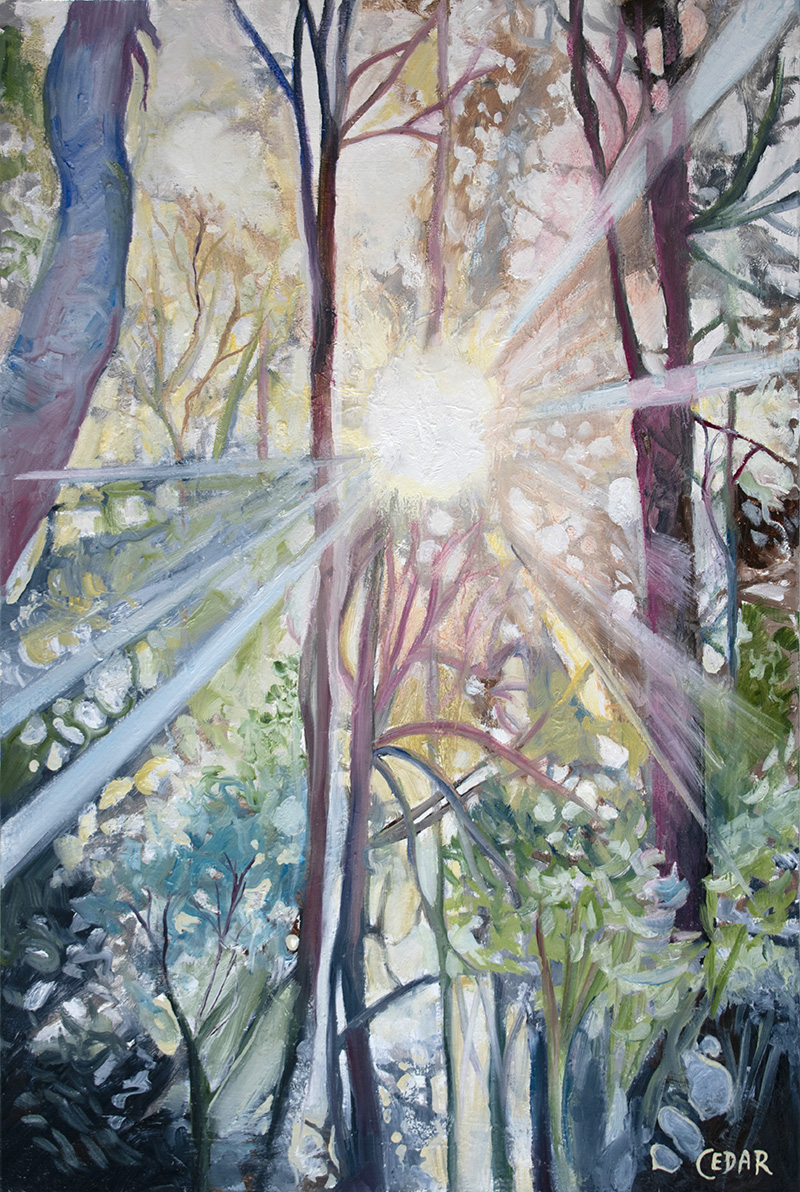
Often, because of family and home responsibilities, or the demands of a “day job,” we are indeed desperately lacking in time to practice our art—but even when we do have the time, occasionally we will still sabotage ourselves through procrastination.
For something that makes us feel so whole and alive when we do it, artwork still very much counts as work, and challenging work at that. Artwork is a unique pursuit because to do it the artist must simultaneously exist in two separate worlds: the grounded, pragmatic world of grunt work, and the cerebral, ephemeral world of creative inspiration. In order to do good work, finding the balance between the two is required every time the artist goes to work. The fact that art can often be a difficult task makes it all the more easy to make excuses for not just getting to it.
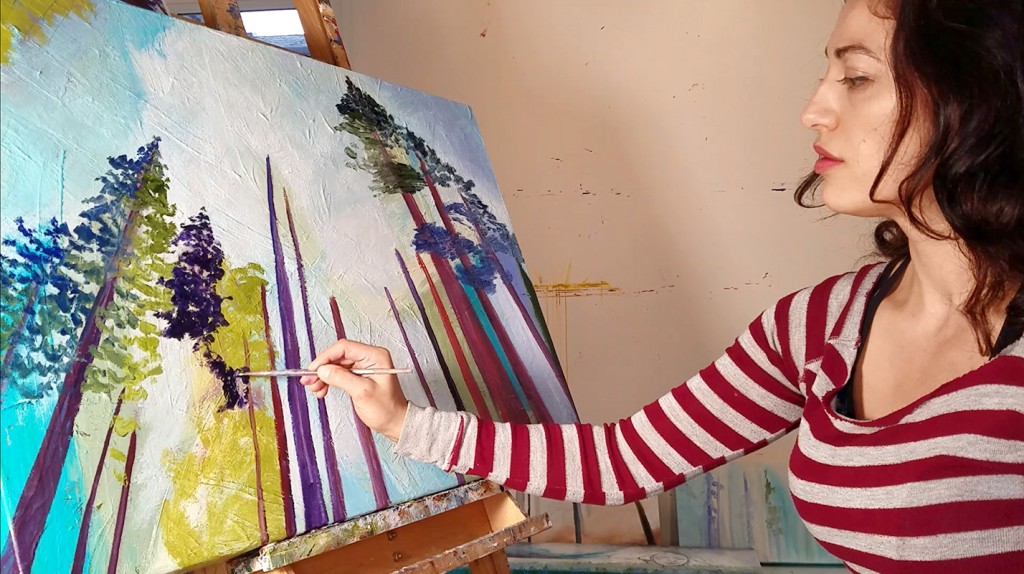
The pressure we create in our own minds to succeed at the task at hand often makes us freeze under intimidation. We tell ourselves we’re not good enough to do it, and the mental energy it takes to overcome that sort of self-talk and go to work anyway is sometimes more than we have to give after exhausting ourselves with unrelated work.
Thus it becomes very easy to fall into a downward spiral.
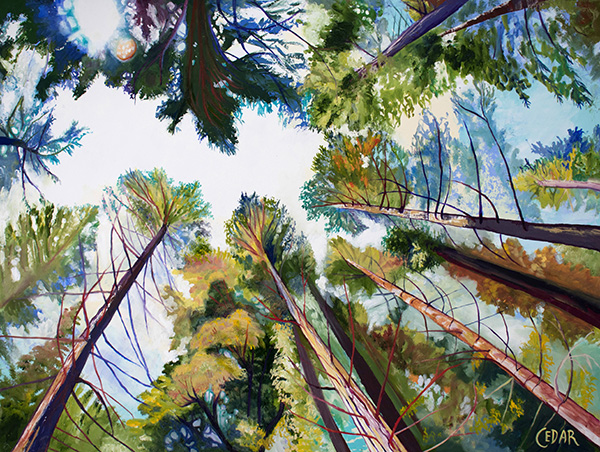
Not working equals depression, which makes it more difficult to work, which leads to not working. Why does a lack of art-making specifically have this effect on us? After all, I’ve never had to contend with this massive internal struggle when doing other jobs. When you think of most other types of work, time not working isn’t a depressing thing—it’s either a neutral or a positive thing, depending on how you feel about that type of work.
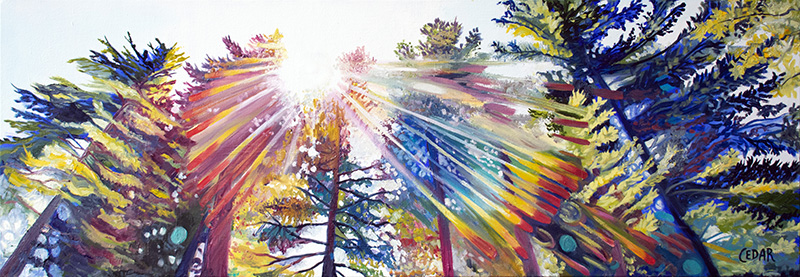
Here are my theories as to why artists get depressed from not working:
1. Art is empowering.
The creator of art holds power because art comes from an internal source—your creative mind. When you are actively creating, it is impossible to be passive. Things cannot be done to you when you’re too busy doing. When you make something that didn’t exist before, you’re the one completely in charge of that process. You have created meaning, or beauty, and added something of value to the world. When you stop flexing your artistic muscles, so to speak, by default you give your power away to external circumstances. And we all know we cannot count on external circumstances to make us feel fulfilled.
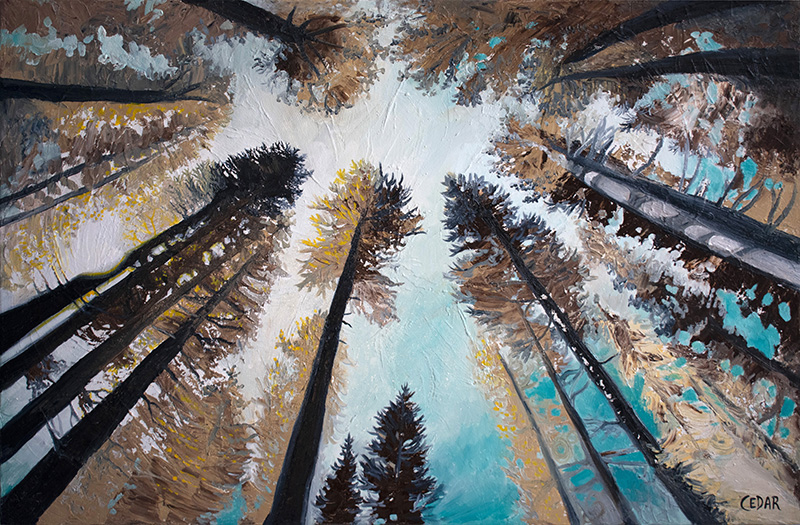
2. Art gives identity.
When we create art, we feel important and relevant. Even without praise from others, just the act of creating art gives a sense of pride: the pride of overcoming challenge, of doing something truly unique and therefore *being* unique. Artists are special. Artists are necessary. Claiming the title of “Artist” gives us a place in relation to the rest of the world.
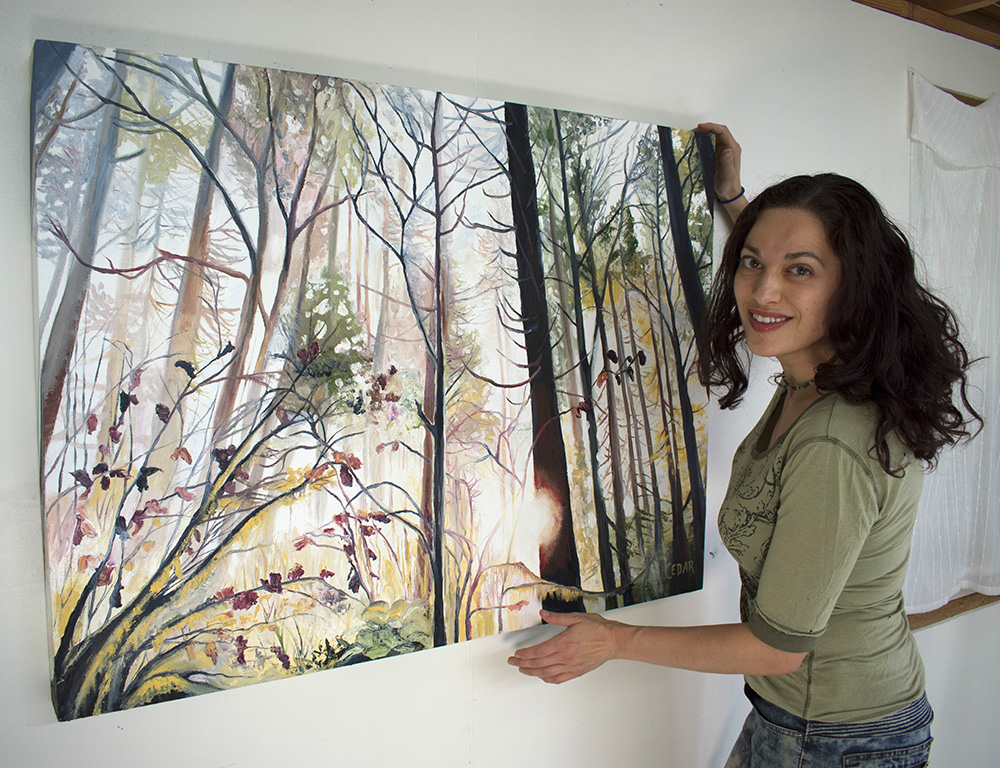
3. Art makes you high.
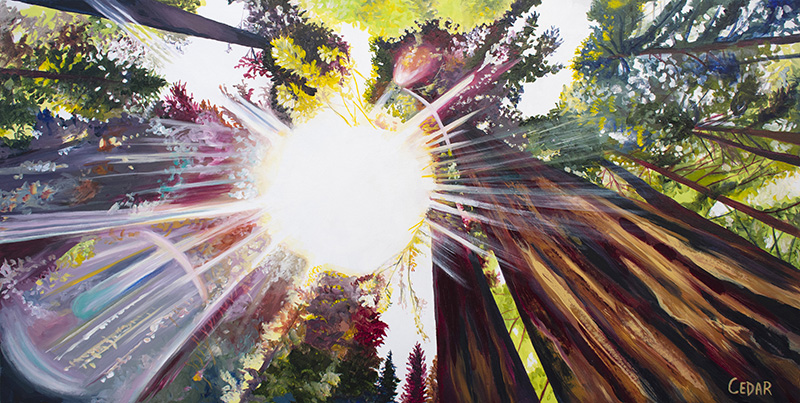
Now, this is probably closer to the high of meditative enlightenment than the high of an ingested drug. However, it’s no less real. The feeling of going deep into the non-verbal right brain into a purely visual, intuitive state is a peaceful feeling. Time ceases to exist in this state. Doing the work uses energy, but at the same time is deeply satisfying.
4. Art makes you high.
And when you have actually reached the point where you’ve completed a work of art, you step outside of that right-brain mind-space and see the work with fresh eyes. Here, you get another kind of rush. You feel the exhilarating joy of success, of finally getting something that you worked for.
To me, it is similar to the high I felt when I had just given birth to my child and was looking into his eyes as I held him for the first time. I’m not trying to imply that the intensity of emotion is the same when creating a piece of art as it is when you’ve just given birth to a child. But–it is the same emotion. There’s a reason why artists frequently refer to their creative projects as their “babies,” and this joyful high is it.
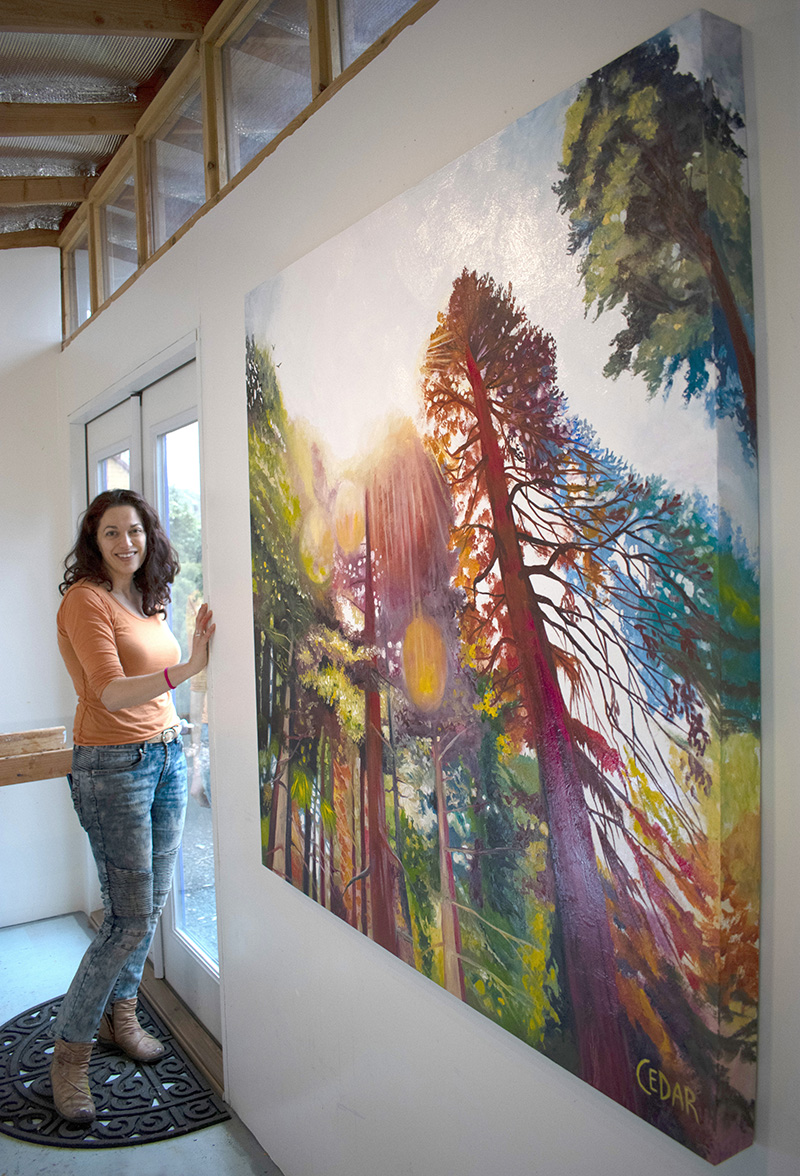
So, if art-making is empowering, gives you identity, and makes you feel all kinds of high, it’s no wonder that when we have a lack of art-making in our lives, we might find ourselves feeling ineffectual, unimportant, and low.
It’s crucial, then, for us to remember, as artists, that we have the ability to create meaning in our lives through our art. We must be secure in the knowledge that this cycle, which is so easy to slip into, is simply part of every artist’s life. We will then be emboldened to go to the studio and squeeze the paint out onto the palette anyway.
“Life beats down and crushes the soul and art reminds you that you have one.” –Stella Adler.
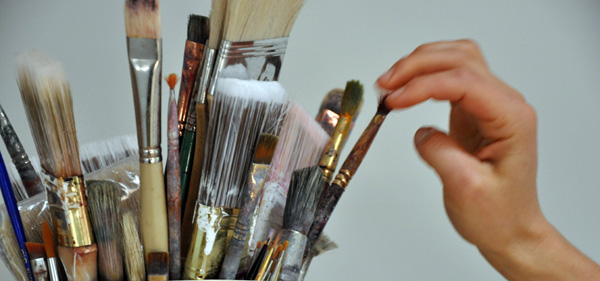
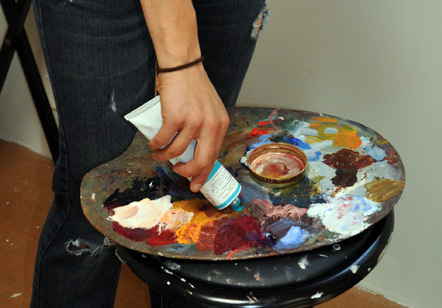
Thank you so much for those truly insightful words, Cedar. The demands of life outside of creating art, do so often stifle the creativity within us. So glad you shared this. Liz
Great points. Well thought out post. If I haven’t painted for a week or so I feel exactly what you wrote about. I say that I’m feeling ‘constipainted’. Pretty much sums it up. Your post puts in words what I have experienced. Now I can be more aware of it.
Thanks for sharing.
Great article and so true ?
I can’t go very long without creating it’s the sun in my universe ⚡️without it all is dark, vast and full of whispering demons
?
Interesting to read this. I haven’t painted for 8 months because I’ve been training as a counsellor as well as doing my paid job. But I decided to take a break before continuing to the next level of training, because I know that I need to paint. I am depressed at the moment – not severely – for a number of reasons. But one of the voices in my head says “what’s the point?” – about a lot of things, particularly making art. There’s so much of it; it’s really hard to find time and ways to sell it ; the art market is corrupt anyway ; I’ve got paintings stacked up on the house….. Nevertheless I’ve started again, spent two weekends procrastinating and preparing my studio by cleaning and tidying up the tangle of dried paint, sketchbooks and canvases covered in dust, and have started a painting. For me, putting my music on helps to take me into the right mental space while I’m preparing the physical space. Better get off Facebook then, which is the worst time waster in my life. I like your pictures, by the way.
Really really well said,
Really good read….
Artist block is my biggest issue then on the flip side soany ideas i dont know where to start ;-? !
Really needed to read this, thankyou
What came first? The chicken or the egg?
This article comes at an important time for me. My husband passed away 2 months ago and I hadn’t picked up a paint brush. I just couldn’t. Fortunately, I have a deadline approaching and had to make myself begin a painting I have committed to a charity event. After a slow start, I am finally beginning to feel the flow return. I actually sent my sister a text last night that simply said, “I feel kinda like me tonight.” She knew just how big that was.
When my husband was sick, I really hoped that art would carry me through the grief after he died, but had no idea how hard it was going to be to just start. I was an every day artist. I created some artistic something every single day, even if just for 30 minutes before work. It made me happy. I want that back and truly believe art is the pathway to my renewal. We don’t get the old life back. We create a new life with what we have today. Today I have my art.
How do you do it?
How do you get past the block, the procrastination, the excuses?
I suppose the simplest answer is that when it’s your job, not showing up for work isn’t an option. (However, that does not make all our human feelings any easier, and it does not make our work any better or more inspired.) When I need to, I just keep slogging through the rough patches and looking for that glimmer of being on the right track.
There are lots of little exercises that can help: Plan the next thing you’ll do in the studio when you come back the next day, so you don’t have to think. Make it something easy to just get you working. Set a timer and see how much you can get done in that time–I like 37 minutes. Usually by the time the timer goes off, I am in the zone and just set it for another 37 minutes. Sometimes it’s helpful to just let go of all expectations of making anything good, and fill a canvas with color as fast as you can. But, the main thing is just to show up.
On this topic, I love the book The War of Art by Steven Pressfield.
Thanks for a great article Cedar. I sometimes go days without creating anything and it’s true I get kinda down at those times.
I still feel low crying while reading this article, no one to talk too nothing to look forward to why am i here why was i born i have no place in life when i am dead no one will miss me where did i go wrong how can i find a little happiness through my art no more art it was cancelled and they want me to color like a 2 year old
I found this post so useful constructive empathetic and touching it really helped me today.
Thanks!
John
szabofinearts.com
Hi John, so glad to hear it!